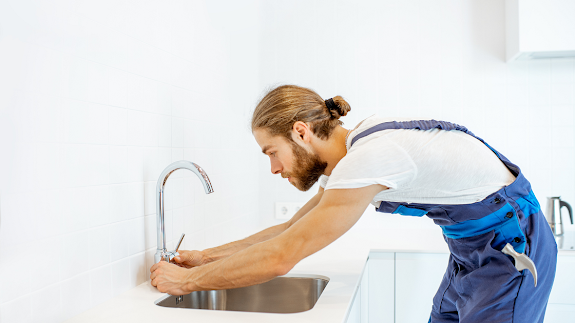Do You Need a Plumber to Install a New Kitchen Faucet?
The heart of any home is often found in the kitchen, where the aromatic symphony of cooking and the gentle hum of daily life blend seamlessly. However, the harmony can be disrupted when a kitchen faucet starts to leak, drip, or simply show signs of aging. When faced with the decision to upgrade or replace kitchen faucet, the question arises: Do you need a plumber for the installation, or is it a DIY-friendly endeavor? In this comprehensive exploration, we'll delve into the considerations, advantages, and potential pitfalls of installing a new kitchen faucet, helping you make an informed decision on whether to call in the professionals or tackle the task yourself.
Assessing the Complexity of the Installation
Before diving into the installation process, it's crucial to assess the complexity of the task at hand. Kitchen faucets come in various designs, ranging from simple single-handle setups to more intricate pull-down sprayers and touchless systems. The complexity of the installation often depends on the type of faucet you choose. While some installations are straightforward and can be accomplished with basic tools, others may require advanced plumbing skills and specialized equipment.
The DIY Approach: Pros and Cons
Many homeowners are inclined to embrace the do-it-yourself (DIY) spirit, and installing a new kitchen faucet might seem like a manageable project. However, it's essential to weigh the pros and cons before grabbing the wrench. One of the primary advantages of the DIY approach is cost savings. By bypassing professional labor fees, you can keep more money in your pocket. Additionally, the satisfaction of completing a home improvement project on your own can be immensely rewarding.
On the flip side, the DIY route comes with its own set of challenges. Novice plumbers might find themselves grappling with unforeseen issues such as rusty or seized nuts, incompatible fittings, or tricky access points beneath the sink. Improper installation can lead to leaks, reduced water pressure, and even structural damage over time. It's crucial to honestly assess your plumbing skills and comfort level with the tools before deciding to go the DIY route.
When to Call in the Pros
While the allure of saving money and the sense of accomplishment associated with DIY projects are compelling, there are instances where calling in a professional plumber is the wisest choice. Complex installations, such as those involving intricate features like touchless technology or integrated water filtration systems, often require a skilled hand to ensure proper functionality. If your home has older plumbing or unique configurations, a professional plumber can navigate potential challenges with ease.
Moreover, hiring a plumber provides an added layer of assurance. Professional plumbers bring experience, knowledge, and specialized tools to the table, ensuring that the installation is not only seamless but also compliant with local building codes. Investing in a plumber upfront can save you from headaches and costly repairs down the line, offering peace of mind that the job is done right the first time.
Common Challenges in DIY Installations
For those still contemplating the DIY route, it's crucial to be aware of common challenges that may arise during the installation process. One frequent issue is dealing with old, corroded plumbing components. The removal of an existing faucet can be a struggle if nuts and connections are rusted or calcified. Without the proper tools and know-how, attempting to force removal can result in damage to pipes or fixtures, turning a simple task into a costly repair.
Another challenge is mismatched fittings and connections. Faucets come with various sizes and threading, and it's essential to ensure compatibility with existing plumbing. Failing to do so can lead to leaks, diminished water flow, or even damage to the new faucet itself. Properly measuring and understanding your plumbing setup is crucial for a successful DIY installation.
Conclusion
In the grand symphony of kitchen life, a smoothly functioning faucet plays a pivotal role. Whether you choose to take on the challenge yourself or enlist the help of a professional plumber, the decision should align with your comfort level, skills, and the complexity of the installation. While a DIY approach can be fulfilling and cost-effective for simple setups, it's imperative to recognize when a professional touch is needed, especially for more intricate faucet designs.
In the end, the goal is a kitchen where the melodies of daily life flow effortlessly, and the refreshing streams from your new faucet become a soothing accompaniment to your culinary endeavors. So, as you contemplate the path forward, consider the factors at play, weigh the pros and cons, and decide whether the wrench is your ally or if it's time to dial in a professional plumbers in Katy TX to orchestrate the perfect installation.




Comments
Post a Comment